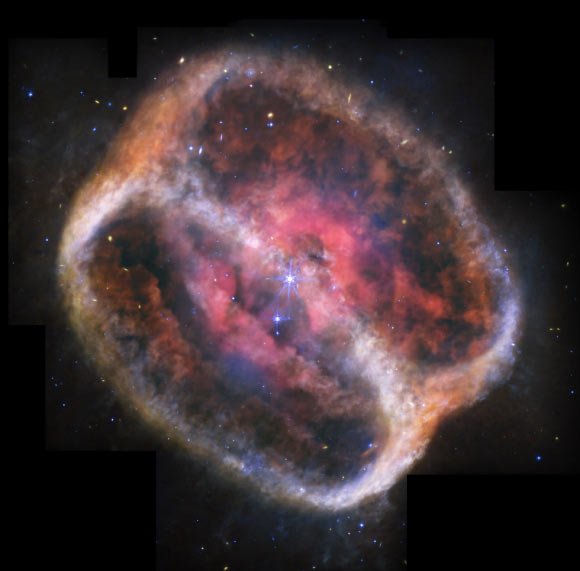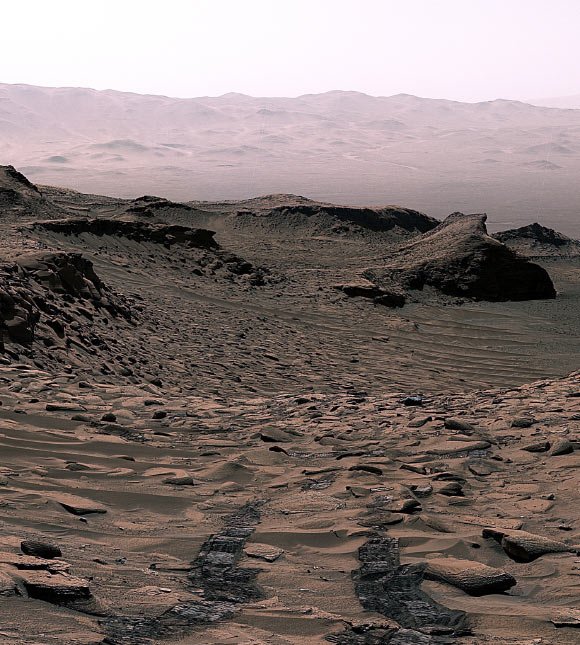NGC 1514’s two central stars, which appear as one in the image from the NASA/ESA/CSA James Webb Space Telescope, formed this scene over thousands of years — and will keep at it for thousands more.

This Webb image shows the planetary nebula NGC 1514. Image credit: NASA / ESA / CSA / STScI / Michael Ressler, JPL / Dave Jones, IAC.
NGC 1514 is located approximately 1,500 light-years away in the constellation of Taurus.
Also known as the Crystal Ball Nebula, the object was discovered by the German-British astronomer William Herschel on November 13, 1790.
He noted that NGC 1514 was the first deep sky object to appear genuinely cloudy — he could not resolve what he saw into individual stars within a cluster, like other objects he cataloged.
The rings around NGC 1514 were discovered in 2010, but now Webb is allowing astronomers to comprehensively examine the turbulent nature of this nebula.
“This scene has been forming for at least 4,000 years — and will continue to change over many more millennia,” Webb astronomers said in a statement.
“At the center are two stars that appear as one in Webb’s observation, and are set off with brilliant diffraction spikes.”
“The stars follow a tight, elongated nine-year orbit and are draped in an arc of dust represented in orange.”
“One of these stars, which used to be several times more massive than our Sun, took the lead role in producing this scene.”
“Once the star’s outer layers were exhausted, only its hot, compact core remained.”
“As a white dwarf star, its winds both sped up and weakened, which might have swept up material into thin shells.”
The new Webb observations show the nebula is at a 60-degree angle, which makes it look like a can is being poured, but it’s far more likely that NGC 1514 takes the shape of an hourglass with the ends lopped off.
“Look for hints of its pinched waist near top left and bottom right, where the dust is orange and drifts into shallow V-shapes,” the astronomers said.
“When this star was at its peak of losing material, the companion could have gotten very close, resulting in these unusual shapes.”
“Instead of producing a sphere, this interaction might have instead formed rings.”
“Though the outline of NGC 1514 is clearest, the hourglass also has sides that are part of its 3D shape.”
“Look for the dim, semi-transparent orange clouds between its rings that give the nebula body.”
The nebula’s two rings are unevenly illuminated in the Webb observations, appearing more diffuse at bottom left and top right.
The researchers believe the rings are primarily made up of very small dust grains, which, when hit by ultraviolet light from the white dwarf star, heat up enough to be detected by Webb.
“In addition to dust, Webb also revealed oxygen in its clumpy pink center, particularly at the edges of the bubbles or holes,” they said.











